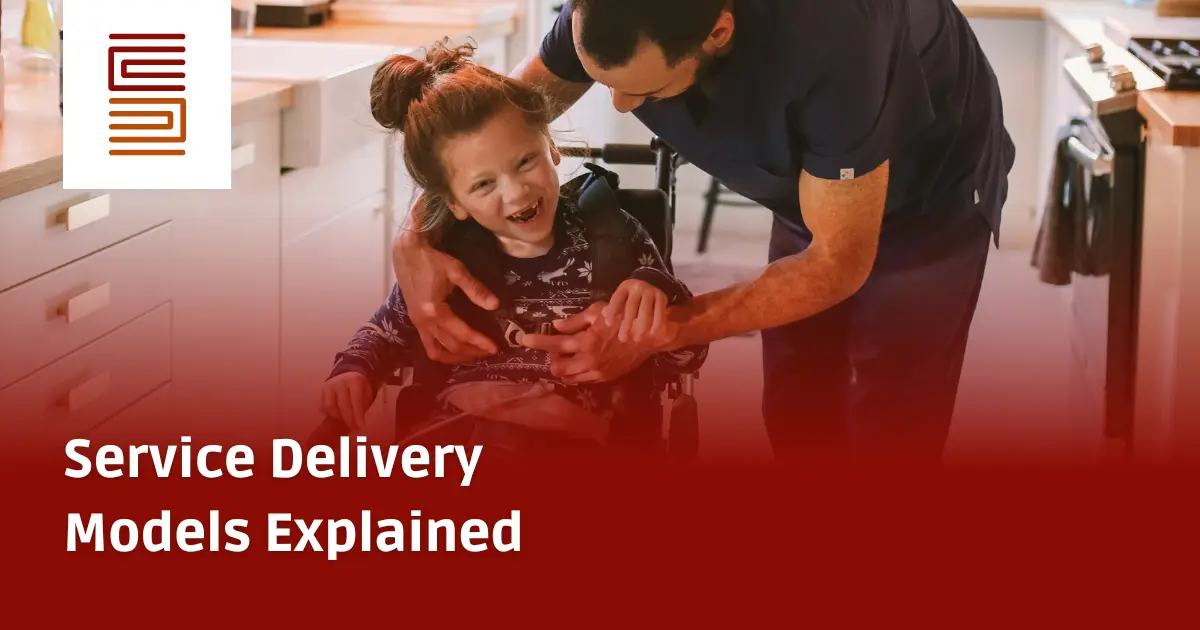Service Delivery Models Explained
When participating in the Supports Waiver program, individuals and families can choose how services are delivered. The two primary service delivery models are the Agency-Based Service Delivery Model and the Participant-Directed Service Delivery Model. Each model offers unique benefits and requires varying levels of participant involvement. Here’s a detailed breakdown of these models, along with key roles and the importance of the Circle of Support.
1. Agency-Based Service Delivery Model
In the agency-based model, a qualified service provider manages and delivers all approved services. This model is ideal for individuals who prefer minimal responsibility in coordinating their care.
Features:
- The service provider hires, trains, and supervises staff.
- Participants receive professional care without the administrative burden of managing employees or budgets.
- The agency ensures compliance with Medicaid rules and quality standards.
Benefits:
- Convenience: Participants don’t have to manage caregivers or services directly.
- Professional Oversight: Agencies handle staff training, background checks, and service delivery monitoring.
Participant-Directed Service Delivery Model
This model offers participants and their families greater control over their services. They can hire and manage caregivers, choose services that align with personal preferences, and oversee their allocated budget.
Features:
- Participants or their designated Employer of Record (EOR) recruit, hire, and supervise staff.
- A Financial Management Agent (FMA) handles payroll, taxes, and Medicaid billing.
- Flexibility in selecting services and providers within the approved budget.
Benefits:
- Empowerment: Participants have control over who provides care and how services are delivered.
- Customization: Tailor services to individual needs and preferences.
- Cost Efficiency: Direct budget oversight can ensure funds are used effectively.
Key Roles in Service Delivery
Community Support Coordinator (CSC):
The CSC is the primary point of contact for participants. They:
- Help develop the Individual Support Plan (ISP).
- Provide guidance on service options and resources.
- Monitor service delivery and ensure participant needs are met.
Employer of Record (EOR):
In the participant-directed model, the EOR is responsible for:
- Hiring, training, and managing caregivers.
- Approving work schedules and timesheets.
- Collaborating with the FMA to ensure payroll compliance.
Financial Management Agent (FMA):
The FMA supports participants in managing their budgets by:
- Processing payroll for caregivers.
- Ensuring Medicaid compliance for service payments.
- Providing financial reports to participants and the state.
Circle of Support and Its Importance
What is the Circle of Support?
The Circle of Support is a group of trusted individuals—family, friends, caregivers, and professionals—who collaborate to help the participant achieve their goals.
Why It’s Important:
- Collaboration: Provides diverse perspectives and resources to support decision-making.
- Advocacy: Ensures the participant’s voice is central in planning and executing care.
- Holistic Support: Addresses medical, social, and emotional needs through teamwork.
Choosing the Right Service Delivery Model
When deciding between the agency-based and participant-directed models, consider:
- Level of Autonomy: Do you prefer professional agencies managing your care, or would you like to hire and oversee providers directly?
- Administrative Responsibility: Are you comfortable managing payroll and provider schedules, or would you prefer having an agency handle these tasks?
- Support Network: Do you have a strong Circle of Support to assist with decision-making and planning?
The New Mexico Support Network can guide participants through this decision-making process, helping them understand the benefits of each model and selecting the one that best aligns with their lifestyle and goals.
How the New Mexico Support Network Can Assist
The New Mexico Support Network provides essential resources and guidance for participants navigating service delivery models, including:
- Educational Workshops: Learn about the differences between the two models and their respective roles.
- Application Support: Simplify the paperwork and ensure all necessary forms are completed accurately.
- Ongoing Assistance: Connect participants with qualified CSCs and FMAs to streamline service delivery and compliance.
By leveraging the expertise of the New Mexico Support Network, participants can confidently choose and manage the service delivery model that suits their needs.
Additional Resources for Service Delivery Models
External References
- Centers for Medicare and Medicaid Services (CMS)
- Medicaid.gov: Home & Community-Based Services
- Medicaid office.
Internal Links
- Understanding the Supports Waiver Program
- Eligibility for Medicaid Waivers
- New Mexico Support Network Resources
For more details or to determine which model is right for you, consult with New Mexico Support Network or your local




